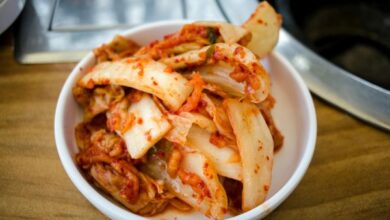Cock & bull stories of Jaintia kingdom still exist
NATHAN THANGKHIEW goes back in history to find distorted facts in western documents

The Jaintia kingdom has been in existence since the ancient time and the well-known Hindu epic, the Mahabharata, has mentioned about the marriage of Duryodhana of the Kauravas into a royal family of Habiganj, Sylhet, Jaintia kingdom.
The Purana also mentions the hero Arjuna travelling to the Jaintia kingdom to regain his horse held captive by a princess (Chowdhury). Oral tradition narrated that orange became the indigenous fruit of the Jaintias ever since Lord Rama brought it over from Lyngkapuri (Sri Lanka). Later, it was imported by Arab traders to Syria and began to spread to Europe in the medieval period through the Christian warriors who fought during the Crusades (Gurdon).
The Jaintia kingdom situated in the remote northeastern parts of India was enormous ,covering an area of about 3,850 sq. miles (9,972 sq. km), hemmed in the north by the mighty Brahmaputra along with its flood prone tributaries of Kulong (Kolong river) and Kupli (Kopili) rivers running across its northern vast plains and in the South by the Surma river flowing from East to West with numerous jheel (water bodies) teeming with millions of fish and nourishing the lush rice fields of various parganas spread over many thousands of hectares.
The Jaintia kingdom bounded by major rivers remained inaccessible during the whole rainy season, yet it flourished remarkably amidst the welcoming deluge producing finest clothes of silk, cotton (muslin), iron, weapons, muskets, hand cannons, gun powder, elephants, ivory, rice, dry fishes, sugar, oranges, areca nuts, pan leaves, etc.
Hypothetically speaking, the Jaintia kingdom as well as other Khasi Himas may perhaps have been indirectly responsible for sustaining and contributing to the protection of all the tribes inhabiting the North East parts of India since antiquity by their knowledge and ability of making iron tools and wet paddy cultivation.
A significant study conducted in March 2013 by Pawel Prokop and Ireneusz Suliga, of the Polish Institute of Geo-environmental Research and Computer Science, Poland, confirmed, through radiocarbon dating of the eit-nar (iron slag) obtained from various iron smelting sites across the Khasi Hills, that iron smelting was a continuous industry of more than 2,000 years old.
Before the East India Company gained entry, the Jaintia kingdom was a very prosperous kingdom and the powerful Jaintia Rajas even stamped their own gold and silver coins. Gold coins were known as ‘Mohor-ksiar’ while silver coins were called ‘Shan-Mohor’, also called ‘Takra Rupia’, by the Bengali Raiot (ryots) as it had an image of a sword (Bareh, 1967).
According to the oral tradition, the Jaintia Rajas belonged to the War Jaintia clan of Syiem Sad Malngiang and they were regarded as ‘Ki Syiem Blei’ (God’s Chief) as they were of divine origin since their Iawbei (ancestress) emerged from a boar (Lyngdoh).
The Jaintia kingdom was perhaps one of the earliest secular and multi-cultural societies as people of different race and culture lived together harmoniously. The Jaintia rajas led by example as the raja and his entire kur (clan) were Hindus but they still followed the matrilineal system of inheritance and upheld the traditional Ancestors worship and this can be attested by the numerous spectacular Megalithic spread all over the Jaintia kingdom.
The Jaintia rajas like the Khasi Syiems were not absolute monarch, and similarly, they are also succeeded by the eldest son of the Syiem Sad known as Koonwuree (Kunwari). Customarily, the Kongor (husband) for the Kunwari was chosen by the Dorbar ki Bakhraw (Council of Chiefs) from amongst the Pnar noble family of the Hima Sutnga which is a strong indicative of their secular nature. Traditionally, all the female clan members of the royal Syiem Sad Malngiang resided in the enormous luxuriant clan land known as July Mahal Pargana (Rajabari, Jaintiapur Upazila, Sylhet Division, Bangladesh).
In1765, the East India Company became the neighbouring revenue collector of the Jaintia kingdom after it was granted the Diwani of Bengal (right to collect revenue) by the Mughal Emperor, Shah Alam. The earliest recorded conflict arising out of revenue collection occurred in 1774, when major Henniker strayed into the territories of the Jaintia kingdom and the handful of East India Company’s soldiers were greeted with musket fired by the soldiers of the Jaintias’ Raja.
The Jaintia rajas even before the advent of the British had already developed a range of weapons such as the long barrel muzzle loaded muskets known as Ram-shangki, suloi tynsah (match-lock), suloi-khyndew (hand cannons/gonne/handgonne), bakhor (gun powder), etc and cannons are commonly placed all over the entrance to the palace of the Jaintia rajas.
Lindsay (1778), the Sylhet Resident Collector, was the first British to successfully trade with the Khasi Jaintias and he provided the first early account which he later reproduced in his memoir, Lives of the Lindsay. Lindsay made a fortune by acquiring the leasing rights of ‘Chunam’ (lime) from the Chiefs (Syiem) of the Cosseah (Khasis).
In his account, he mentioned that he traded in other valuable produce of the Khasi Jaintias which include iron of the finest quality, sugar, honey, cotton, muslin, silk, elephants, ivory, oranges, coal and drugs for European market. Lindsay provided an exciting account about the Shekar (hunting) arranged by the Jaintia Rajas, whom he described as the most civilized person and who did arrive at the rendezvous in grand fashion accompanied by a fleet of 50 boats with flying streamers (flags). He also gave an interesting account about capturing elephants from the wild and claimed to have captured over 500 elephants annually. On 29 June, 1782 Lindsay wrote a letter describing about his good fortune in trading with the Khasi Jaintias in which he mentioned that in just four years of trading, he had made an astronomical sum of £ 10,000-15,000 (Rs 13-19 crore at present rate).
But successive Sylhet Collectors who replaced Lindsay did not have cordial relationship with the Jaintia Rajas and the primary skirmishes was over the toll at the chokey ghats (river bank toll gates) along the Surma, imposed on all goods-carrying boats entering and exiting the Jaintia kingdom. Two major conflicts also occurred in 1787 and 1795, over the limestone mining rights of the East India Company with Hima Nongstoin and Langrin which threatened to disrupt the thriving business of the East India Company. In order to pacify the Khasi Jaintia Himas, the Board of Directors, vide Regulation No.1 of 1799, declared freedom of trade between the Khasi Jaintia and Sylhet but prohibiting carrying of fire arms and forbidding entry into the Khasi Jaintia kingdom.
In 1800, notwithstanding the prohibitory order, Dr. John Peter Wade wrote a bizarre account of the genealogy and history of the Jayanta Rajahs (Jaintia Rajas) without even setting foot in the Jaintia kingdom and this fact was reflected in the forwarding letter of Wade appended to Lt. Col. Kirkpatrick (Wade). Wade claimed that he obtained the history of the Jayanta Rajahs (Jaintias Rajas) based on the translation of an extinct Bayloongh or Ahum (Ahom) script written on a piece of cotton cloth which incredibly only one surviving person could read and the original piece of cloth he claimed had been sent to Lord Teignmouth in England, which till date remained untraceable.
Wade’s account about the Jaintia Rajas was fictitious, cock and bull stories that are bereft of any logic or truth and in total disregard of the culture and tradition of the Jaintia people. Wade made a fundamental error on the Genealogy of the Jwointa Rajahs (Jaintia Rajas) as he described that the Jwointa Rajahs (Jaintia Rajas) emerged from the fish caught from the river Khootungah or Sutoonga (Sutnga) which flow from Garrow (Garo) mountains.
 In reality, there is no river in Zointee (Jaintia) which flow from the Garrow (Garo) mountains. Moreover, the Jaintia Rajas were from the Syiem Sad Malngiang clan and they emerged from a Boar while the Syiem Sutnga, who’s Ancestress was the fish, were the Syiem of Hima Suntga. Similarly, Francis Hamilton Buchanan (1807-14) without ever setting foot in the Jaintia kingdom wrote an anomalous account of the Khasi Jaintia from Rungpur (Rangpur, Goalpara, Assam) and he even confused them with the Garos.
In reality, there is no river in Zointee (Jaintia) which flow from the Garrow (Garo) mountains. Moreover, the Jaintia Rajas were from the Syiem Sad Malngiang clan and they emerged from a Boar while the Syiem Sutnga, who’s Ancestress was the fish, were the Syiem of Hima Suntga. Similarly, Francis Hamilton Buchanan (1807-14) without ever setting foot in the Jaintia kingdom wrote an anomalous account of the Khasi Jaintia from Rungpur (Rangpur, Goalpara, Assam) and he even confused them with the Garos.
It is very unfortunate that the preposterous and illogical accounts of Wade and Buchanan, which should have been immediately dismissed and thrown away as garbage, was later on exploited and treated as a source of history. The later prejudiced colonial officers chose to deliberately validate the absurd account of Wade to stereotype the powerful Jaintia Rajas as mere mountaineer chiefs who were subjugated by the Koch king and commanded to mint coins in his name. The hapless Raja was even forced to wed a Koch Bihar princess, who was the worshipper of Goddess Jaintesvari, the protagonist of human sacrifice.
It is a matter of grave concern that even today, generations from across the world are being fed with these distorted facts, bogus, cock and bull history of the Jaintia Rajas when in fact the Jaintia Rajas were the continuous dominant ruler over a vast prosperous kingdom which had its own gold and silver currency and the notion of Jaintia Rajas’ minting coin for the Koch king is sheer lunacy.
Besides, there is no oral history to ever authenticate that the Jaintia or Khasi kingdom were ever conquered, and moreover, crossing the Brahmaputra with a large army is impossible. Further, the Jaintia Rajas are matrilineal and the wife of the Raja is not the Queen but she is called Mahadei and unlike other kingdoms, all religious matters are the subject of the Dorbar which the Raja has no authority, therefore the personal veneration of the Mahadei is irrelevant.
(Historical facts taken from various studies)




